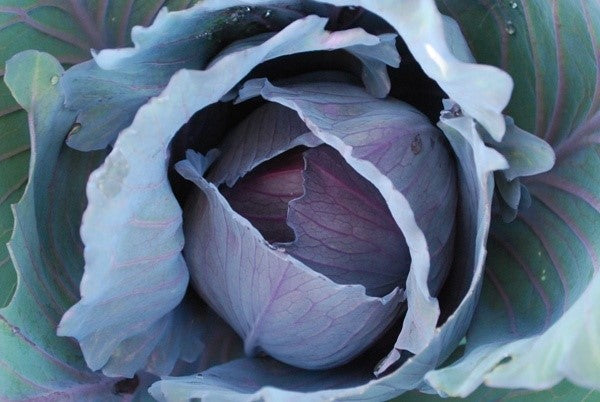

Red Express is a hardy biennial that produces a smaller cabbage that does well in cool northern climates. As the name implies, Red Express is an early maturing variety, It is considered a ball head type cabbage that produces dense purple medium sized cabbage heads that are about 12-18 cm (5-7”) wide and weigh about 1.8 kg (2-4 lbs.). Red express cabbage has a compact spread of 20-30 cm (8-12”) and grows to 20-30 cm (8-12”) tall. Red Express cabbage can be comfortably spaced at 20-30 cm (8-12”) apart.
Growing Instructions:
Cabbage can be grown from seeds or transplants. Start seeds indoors 6-8 weeks before the last frost date in your area. When planting outdoors, choose a location with full sun and well-drained soil that is rich in organic matter. Cabbage prefers a soil pH of 6.0-6.5. Space transplants 30-45cm (12-18") apart in rows spaced 60-75cm (24-30") apart. Water plants regularly, especially during dry spells. Fertilize with a balanced fertilizer every 4-6 weeks during the growing season. Cabbage can be harvested when the heads are firm and full. Heads can be cut off at the base of the stem or the whole plant can be harvested. Avoid planting cabbage in the same location more than once every three years to prevent the buildup of soil-borne diseases.
Soil Conditions: Well-drained soil that is rich in organic matter. Soil pH: 6.0-6.5 Planting Depth: Transplant seedlings to a depth of the first set of leaves. Germination: 7-14 days. Height at Maturity: 30-60cm (12-24") tall. Days to Maturity: 70-100 days. Watering: Water plants regularly, especially during dry spells. Sun/Shade: Full sun. Spacing after Thinning: Space transplants 30-45cm (12-18") apart in rows spaced 60-75cm (24-30") apart.